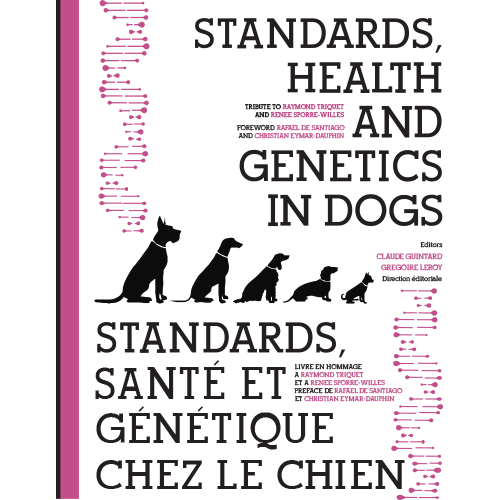About This File
Abstract - Spectacular advances in molecular genetics are gradually being implemented in practical applications, but they must be better understood if they are to be put to good use. In this respect national kennel clubs have a key role to play between the worlds of research, veterinary medicine and breeding. However, effective breeding has been possible using data from classical genetics, which are briefly described in four areas: morphological characteristics – which are of such importance in dogs because selection based on “beauty” is still predominant –, coat colour and hair structure, behavioural traits and, finally, inherited diseases. It is especially in the field of genetic diseases that classical knowledge about heredity has been shown to be insufficient in terms of the applications expected, the “weak point” being the inability to objectively identify asymptomatic carriers. Molecular genetics has come a long way since the first gene maps, producing fundamental knowledge about the location, then the function, regulation and expression of genes, as well as providing breeders with genetic tests that can be used to identify dogs, detect disease carriers, assist in disease diagnosis and predict the genetic status of a litter. Knowledge gained about the canine genome is described, as well as the genetic studies enabled by the development of DNA microarrays: determining the genetic profile unique to each individual, detecting single-nucleotide polymorphisms, etc. More and more is known about the genetic basis of diseases through the understanding of gene regulation mechanisms and the influence of environmental factors on gene expression in the context of epigenetics. The following section recalls the extraordinary phenotypic diversity observed across all dog breeds, arising mainly from human selection. This has proved very effective, but it has also gone hand in hand with the inadvertent co-selection of alleles responsible for diseases. The authors illustrate this process, taking several examples from the four areas chosen in order to present data from classical genetics. At the same time, basic knowledge about the genes concerned is also presented. Research on inherited diseases is all the more important in that it benefits both human and veterinary medicine. The biobank of samples from dogs of all breeds, whether affected by a given genetic disease or healthy, which was created and is managed by the CNRS team in Rennes, plays a key role in the research system. The article ends with the issue of genetic testing aimed at detecting carriers, which is attracting considerable interest from breeders. In conclusion, the authors reiterate the importance of successful collaboration between researchers, veterinarians and breeders, and underline the fact that that seminars on “Genetics and health”, such as the one to be held in April 2017, are a concrete example of this.
What's New in Version 1.0.0 See changelog
Released
English and French versions of the article are available.
 Donate
Donate

